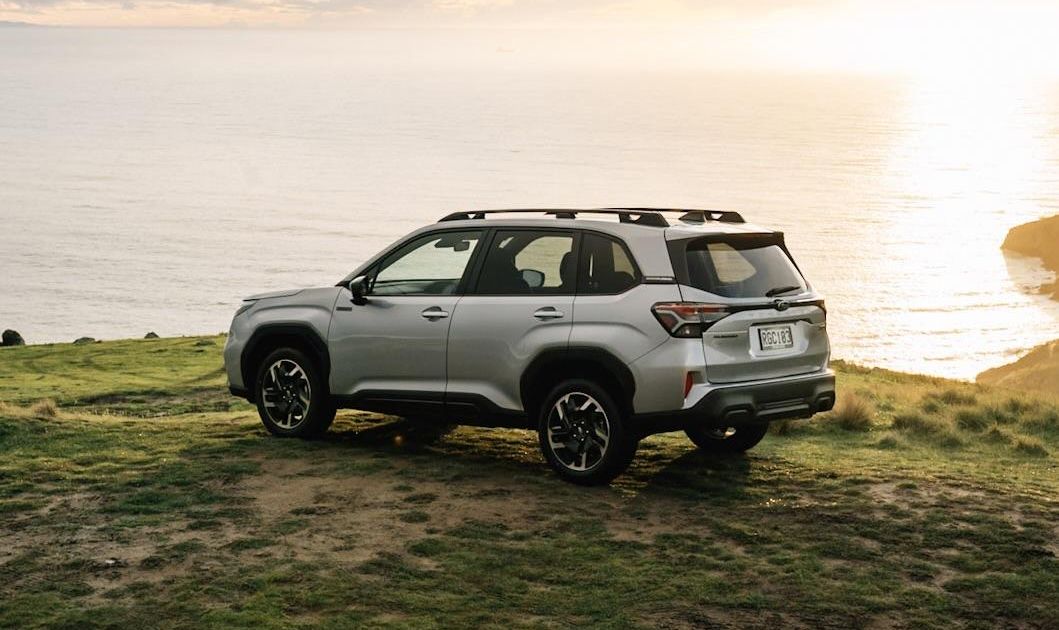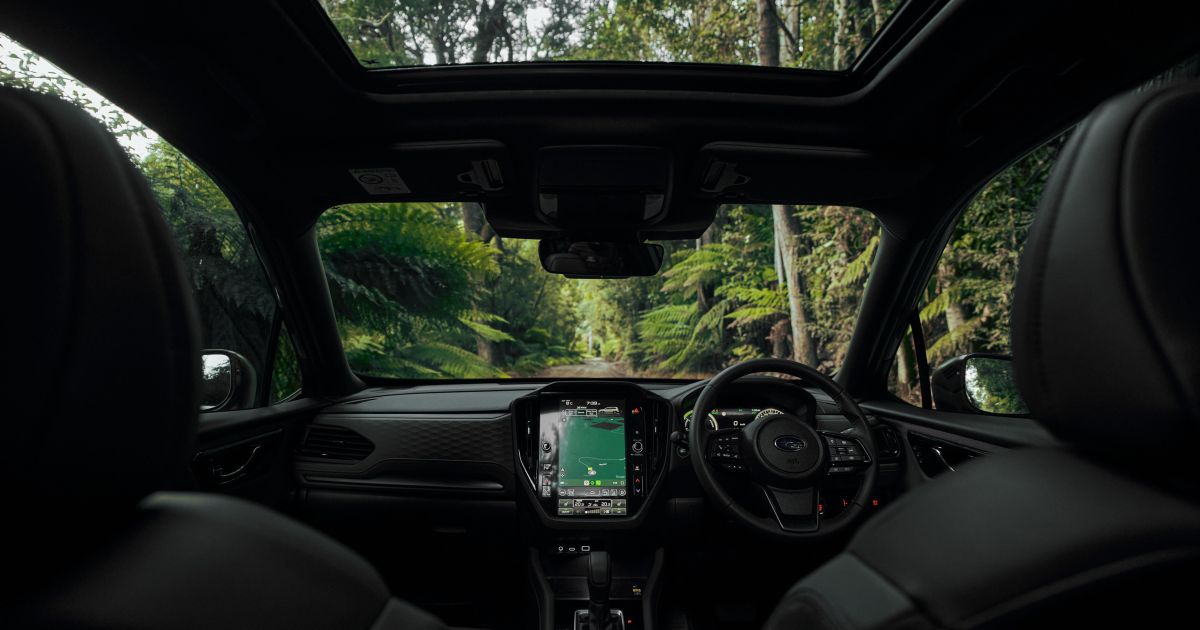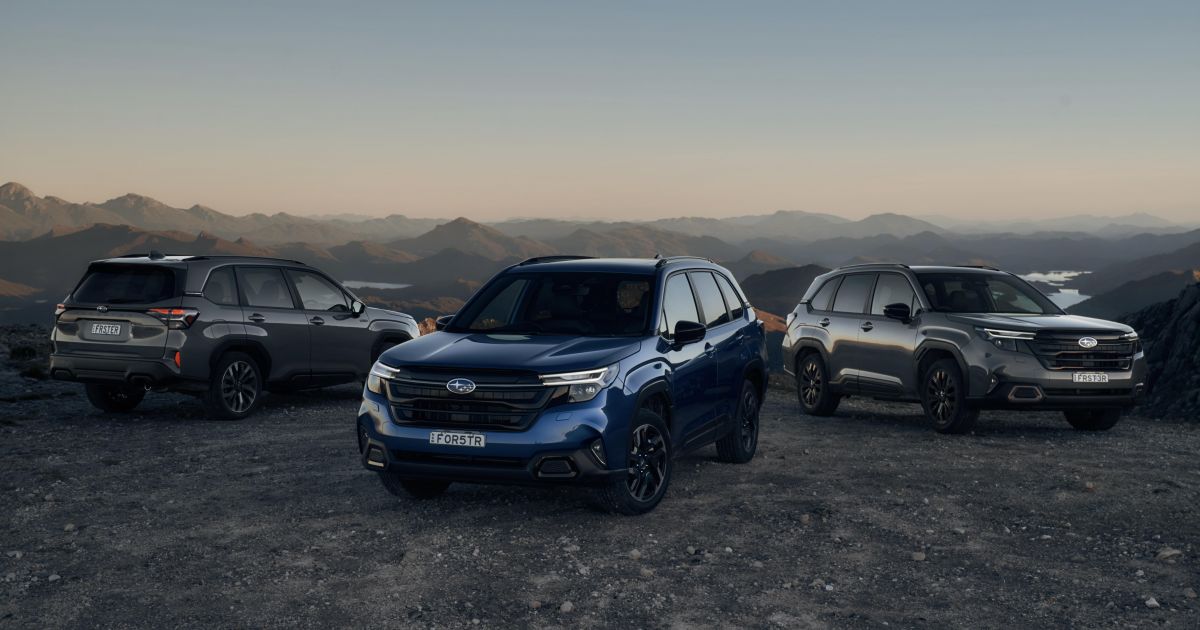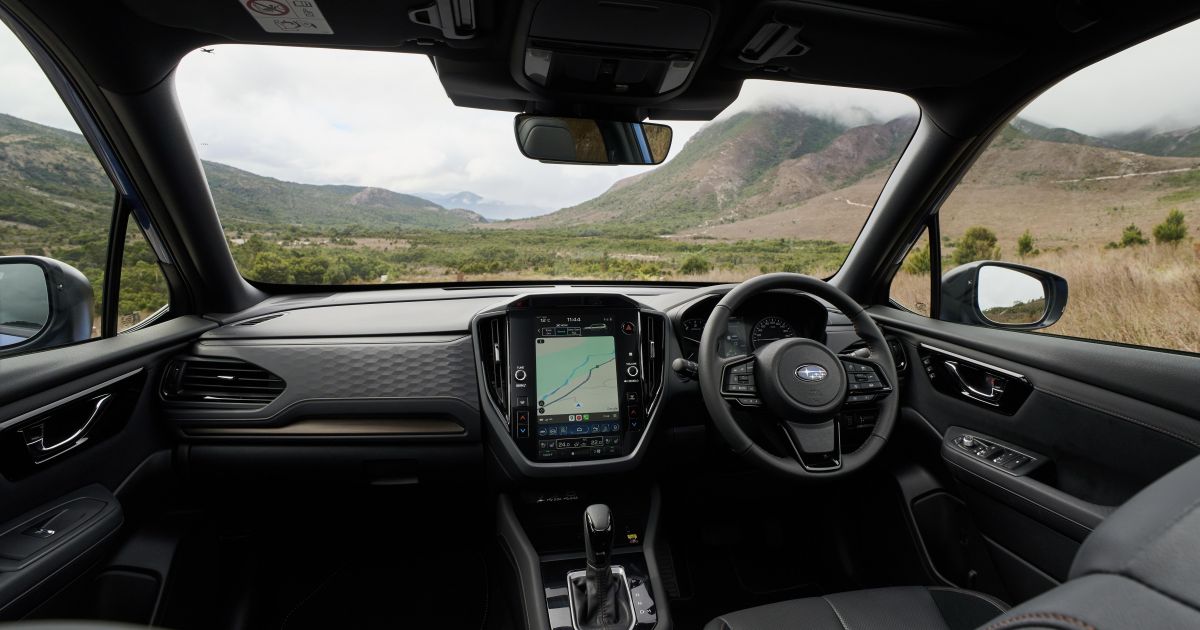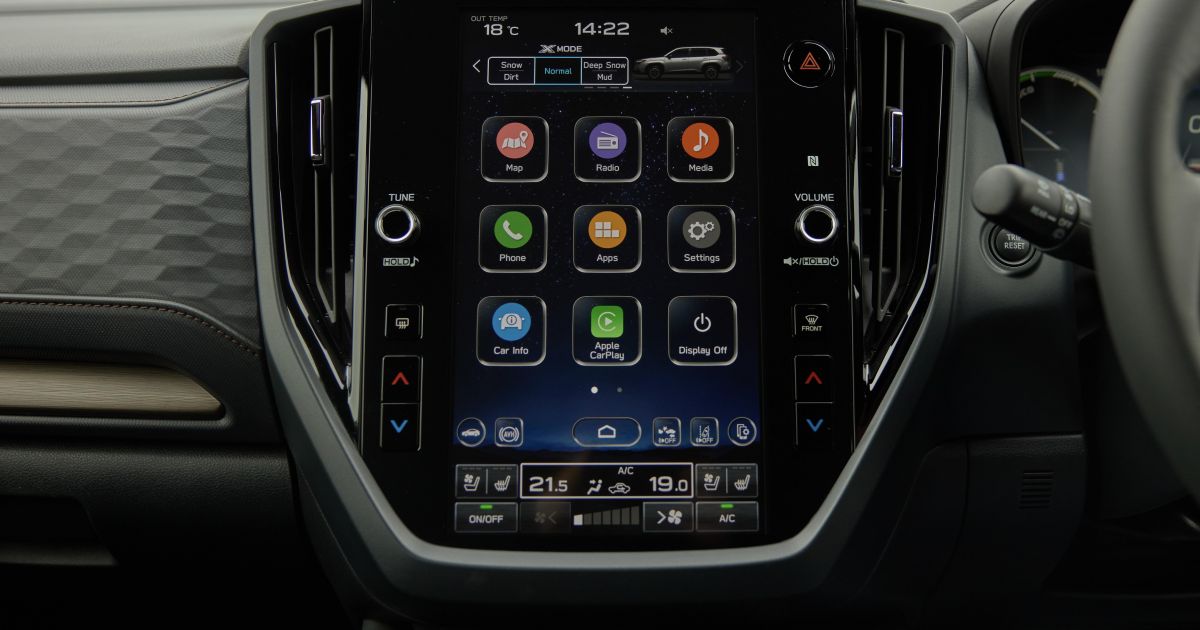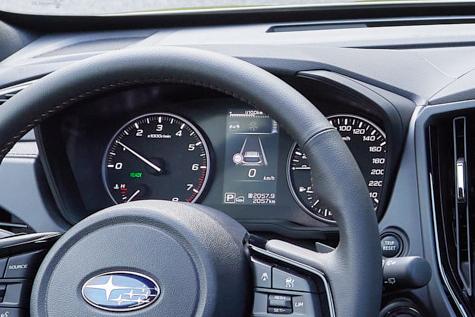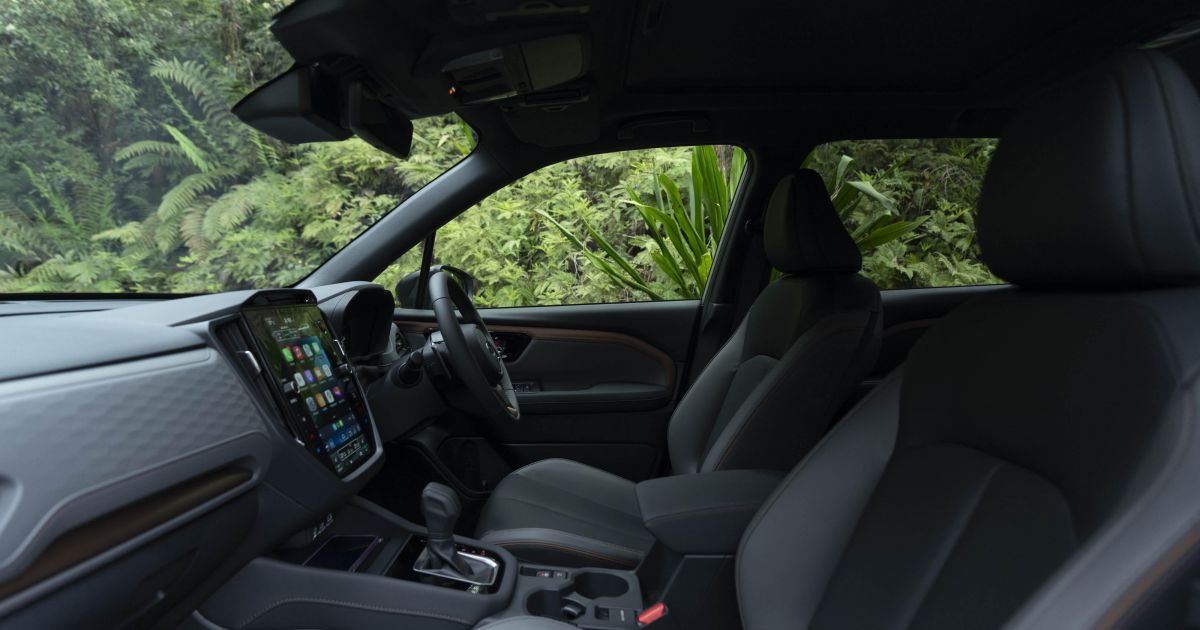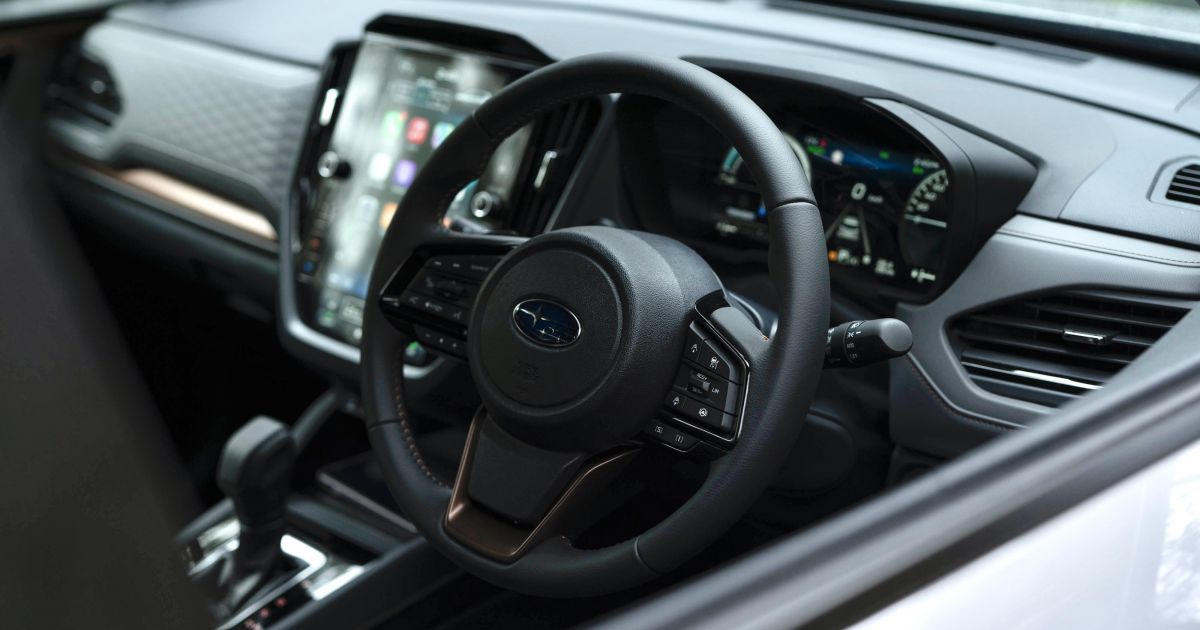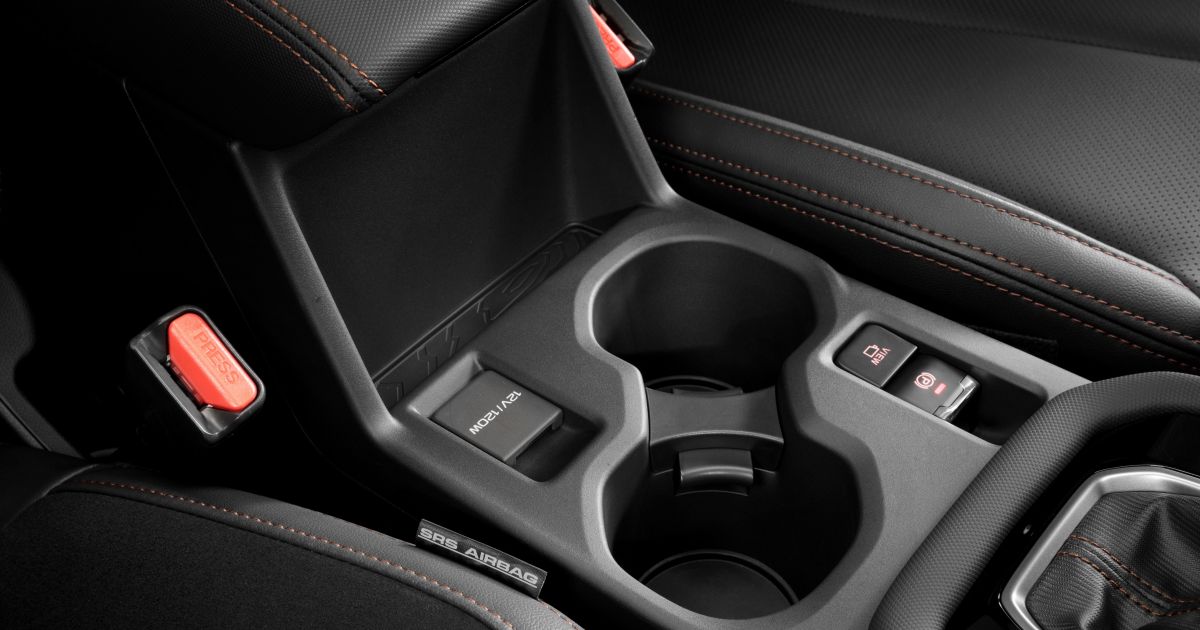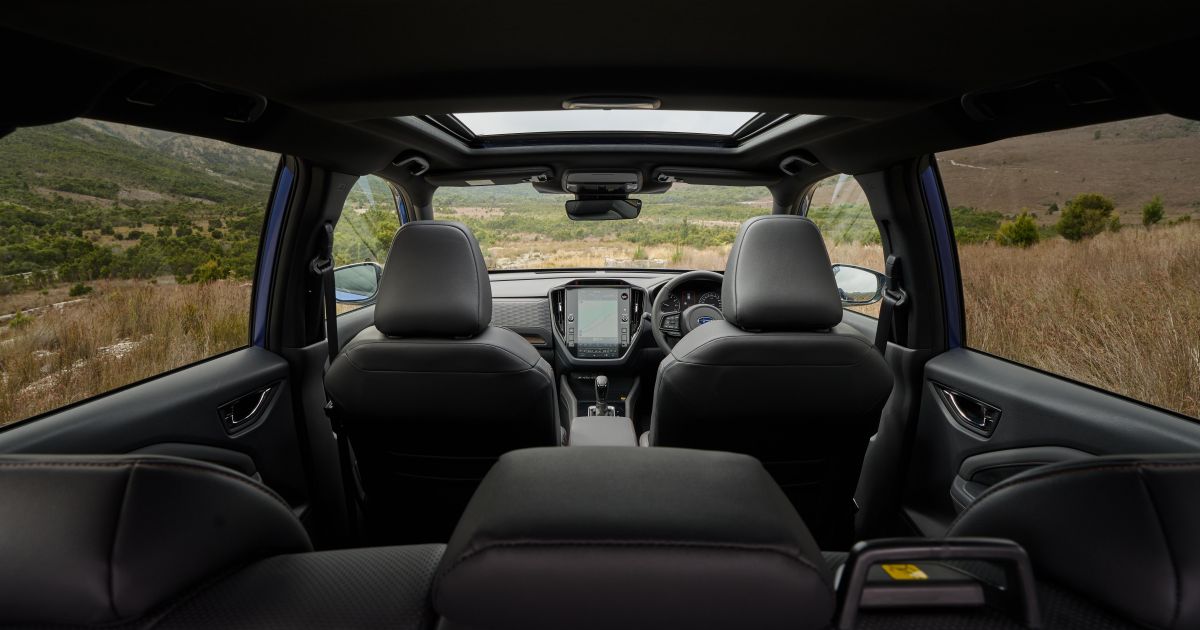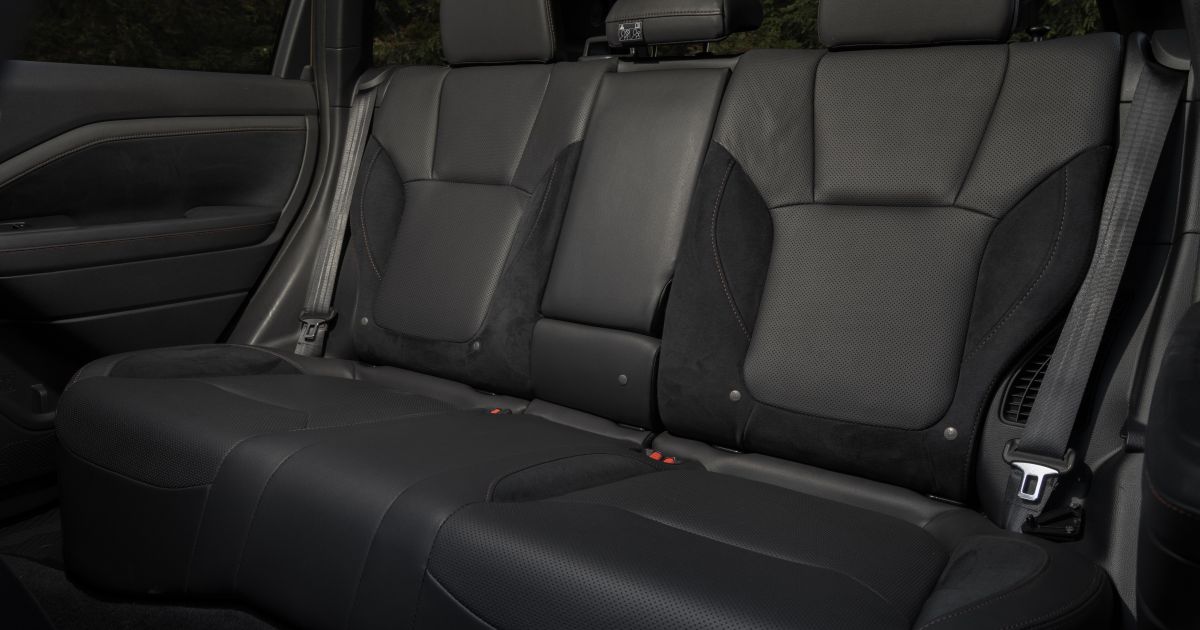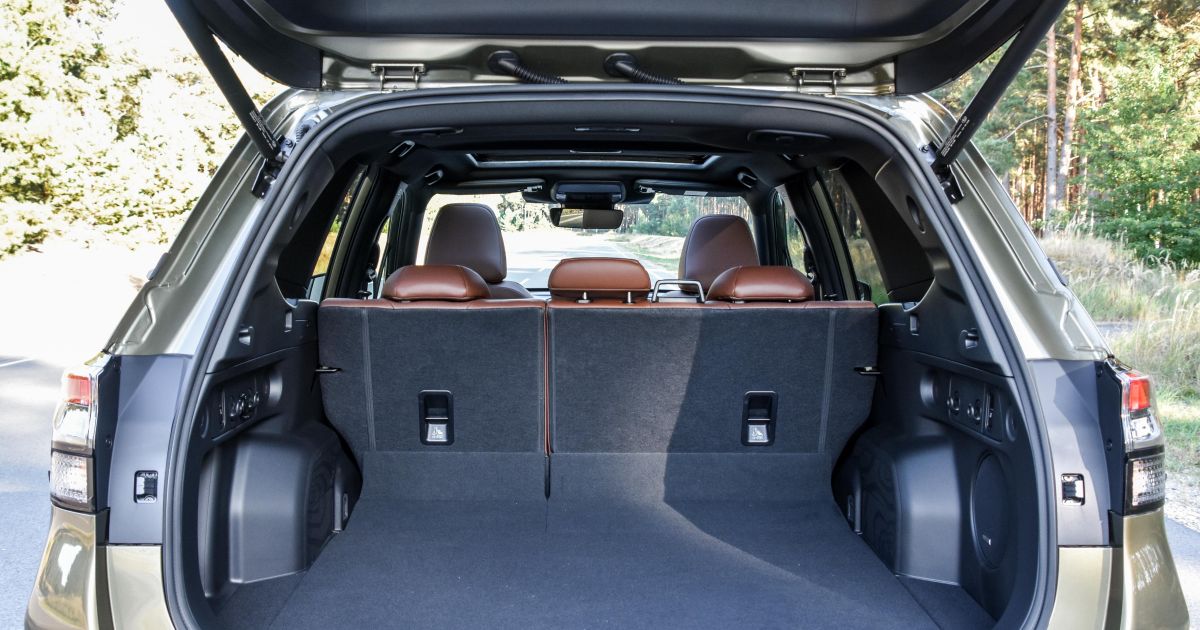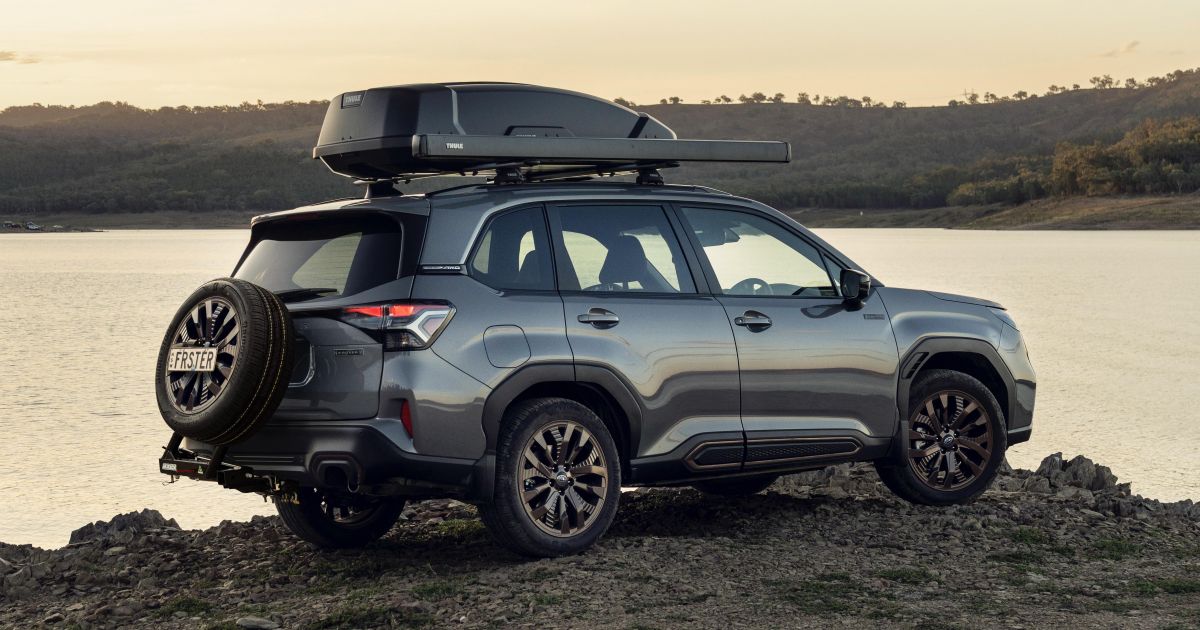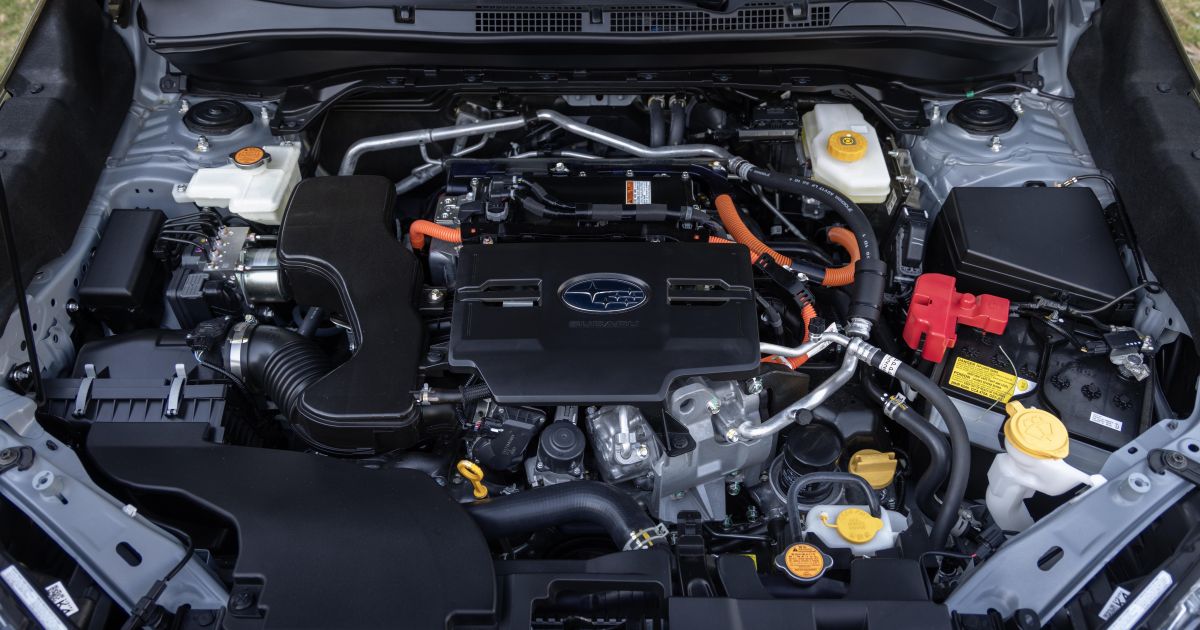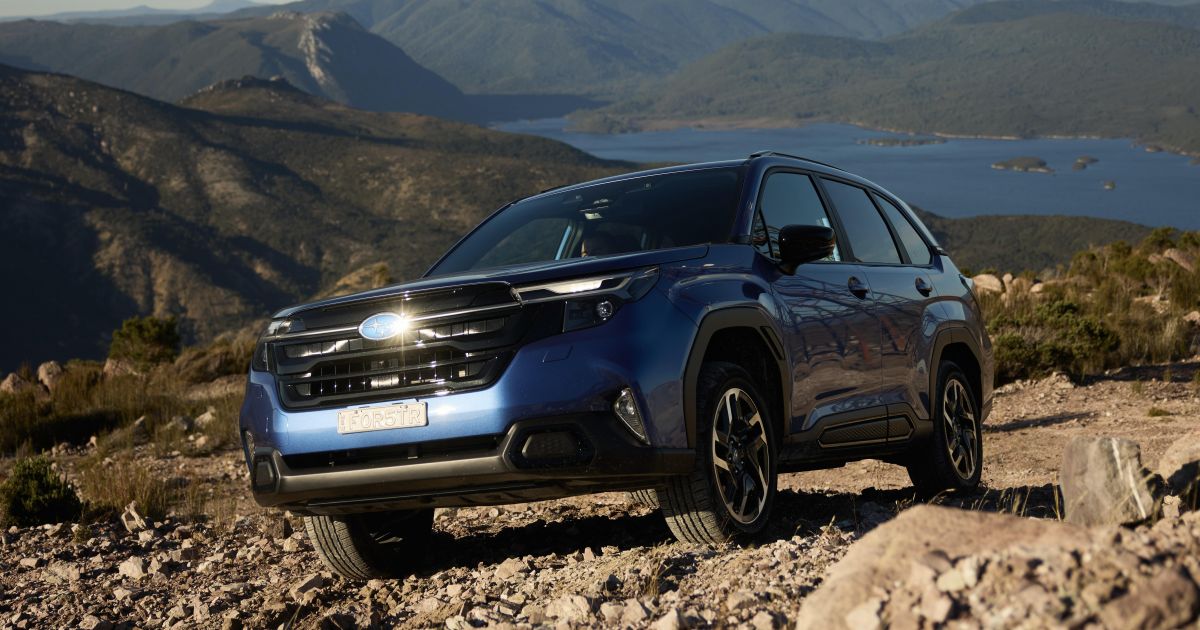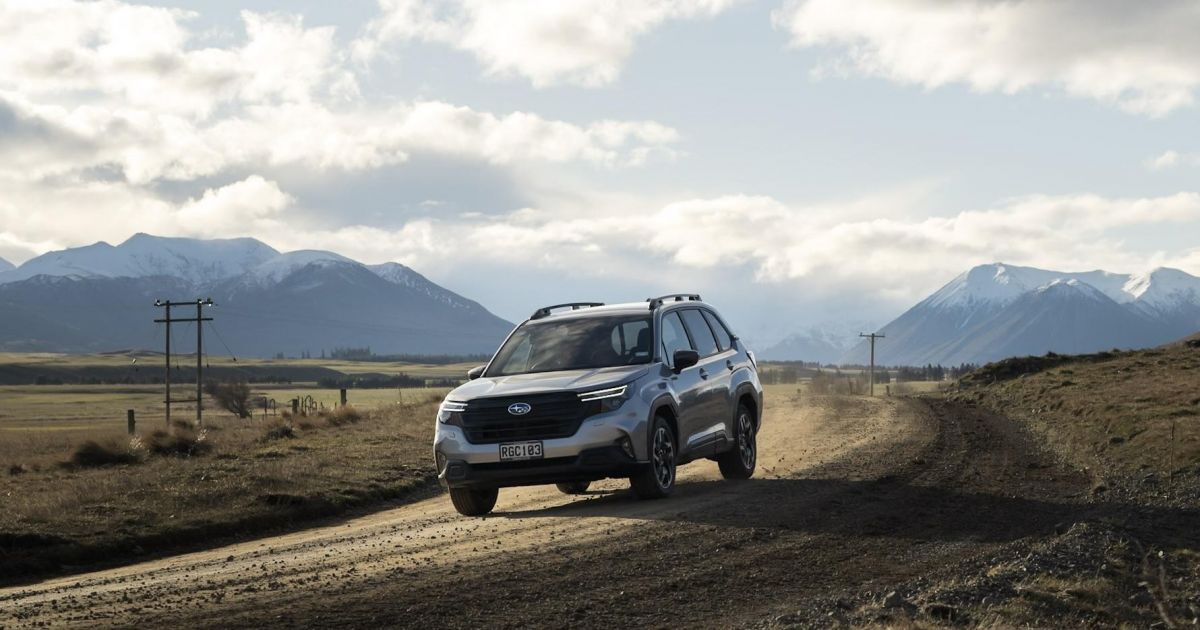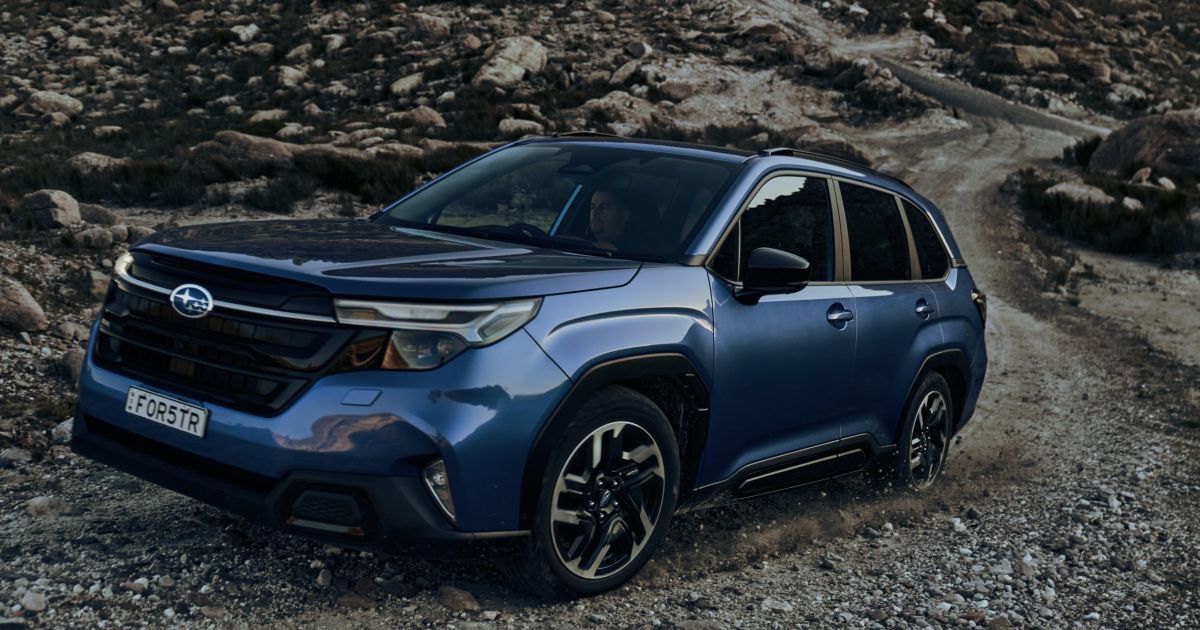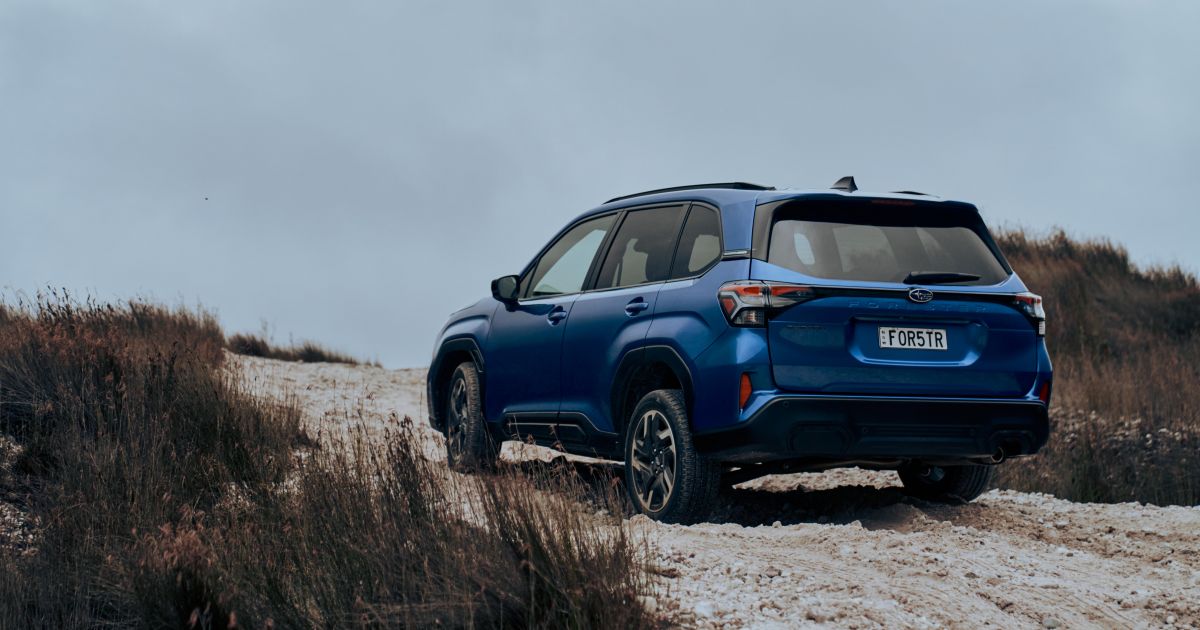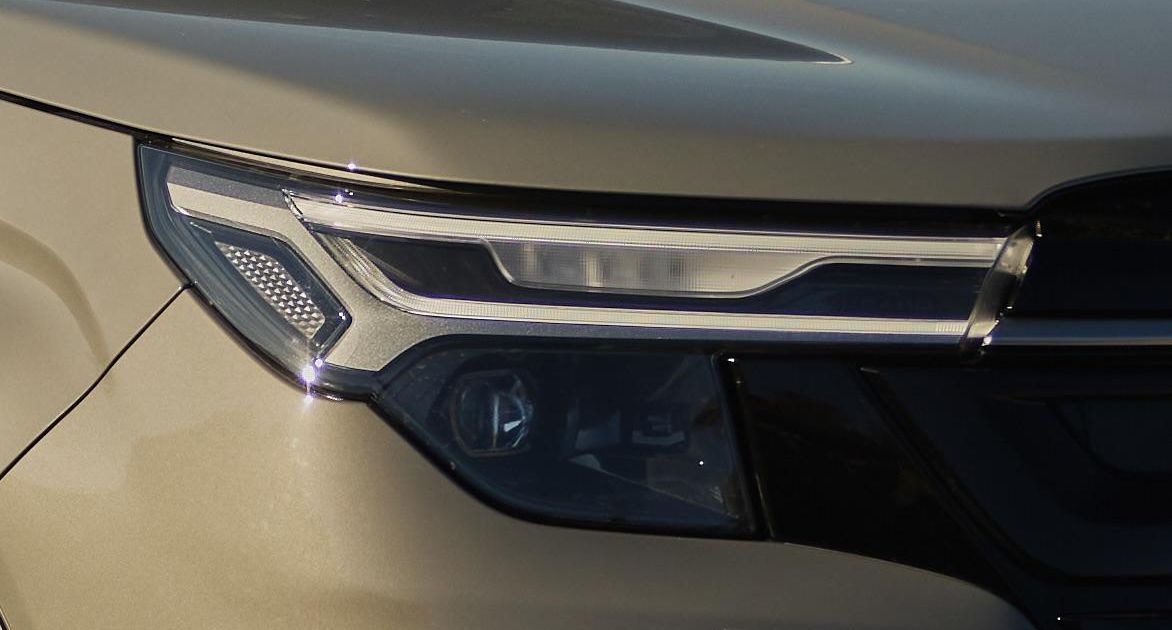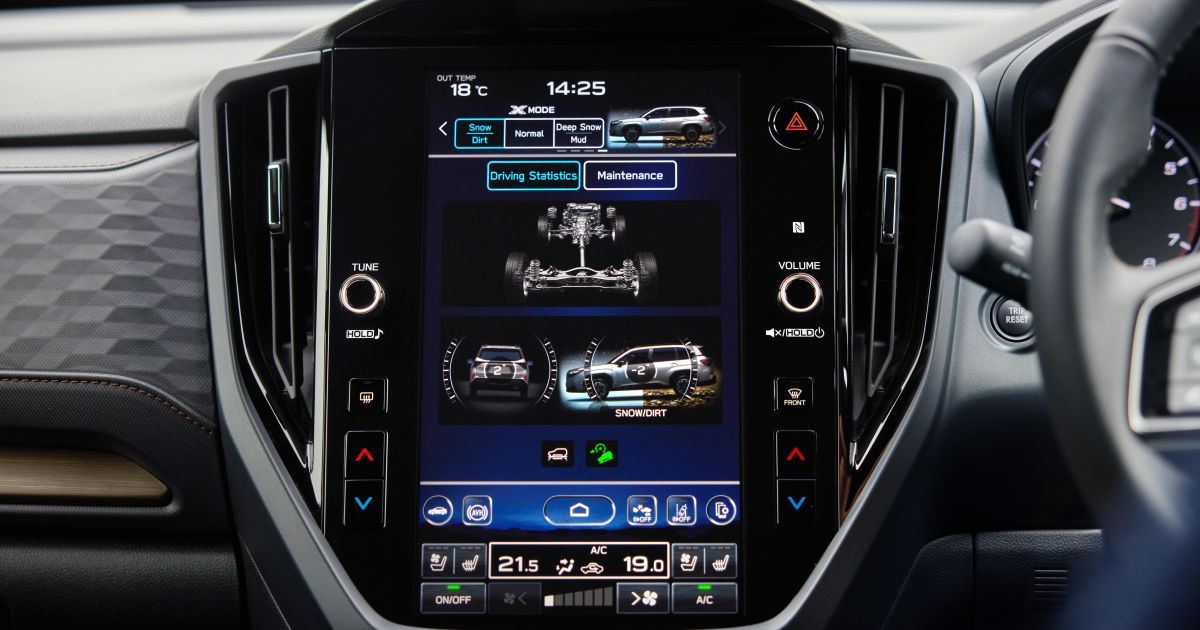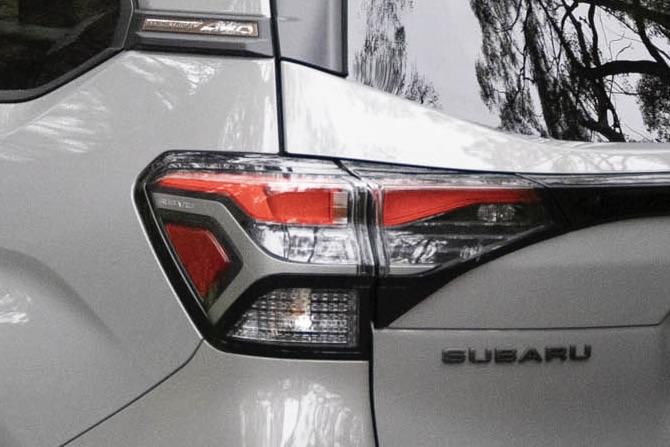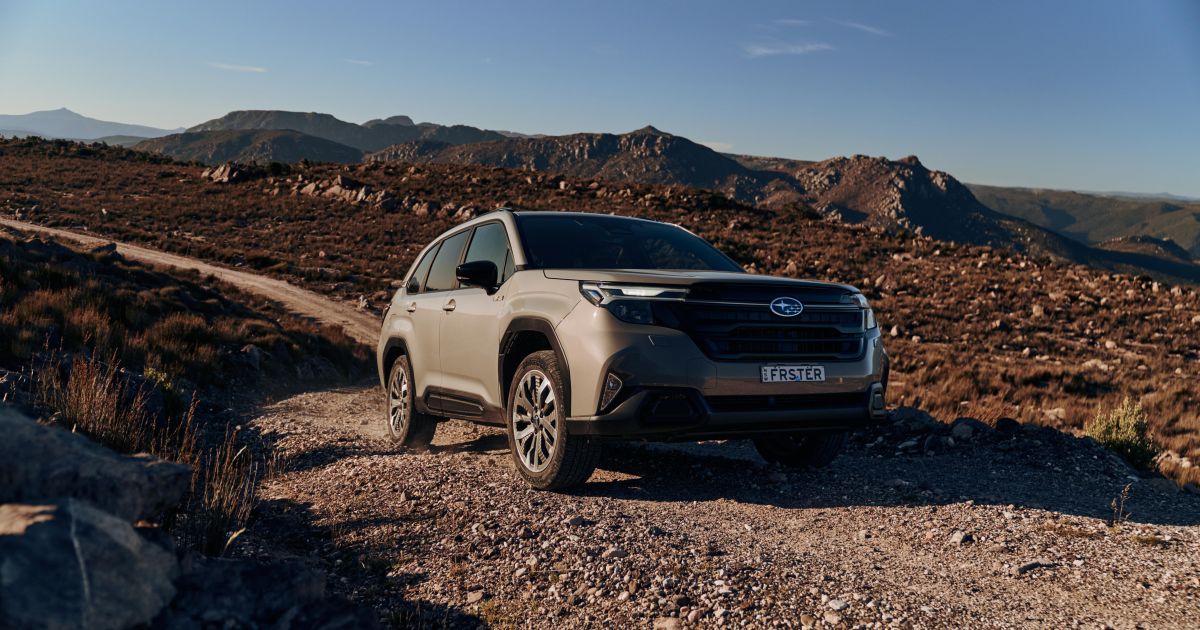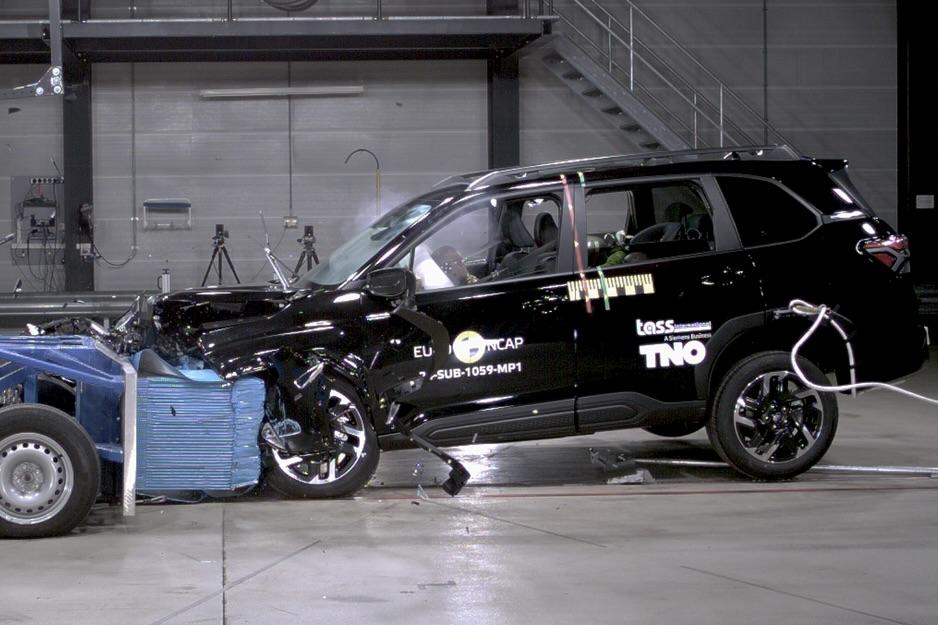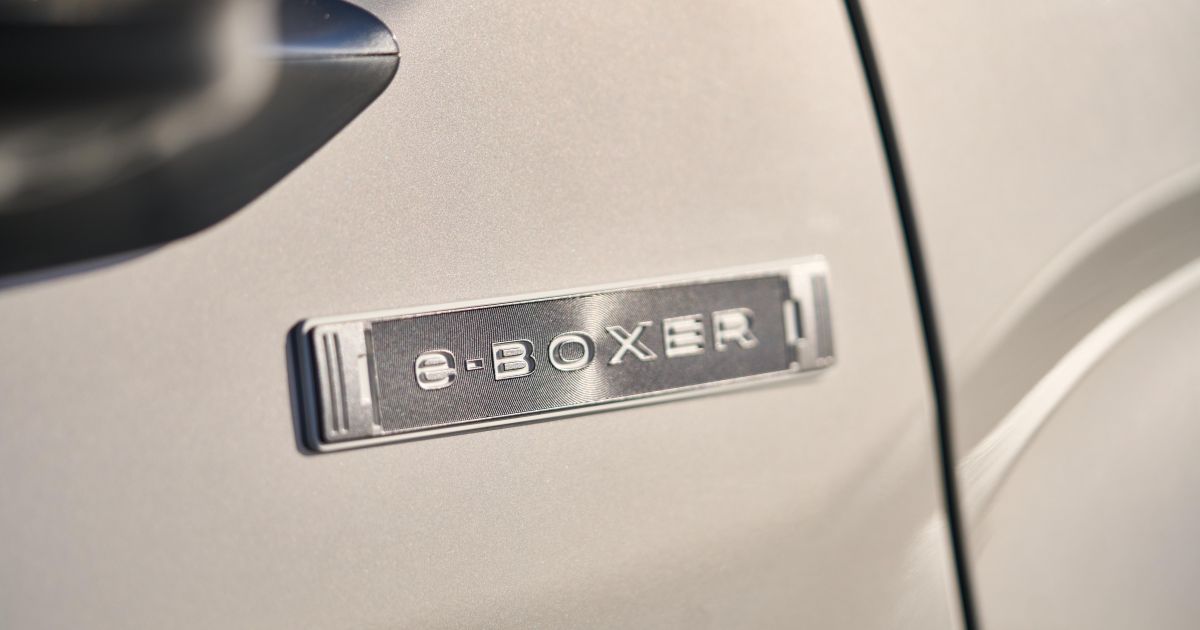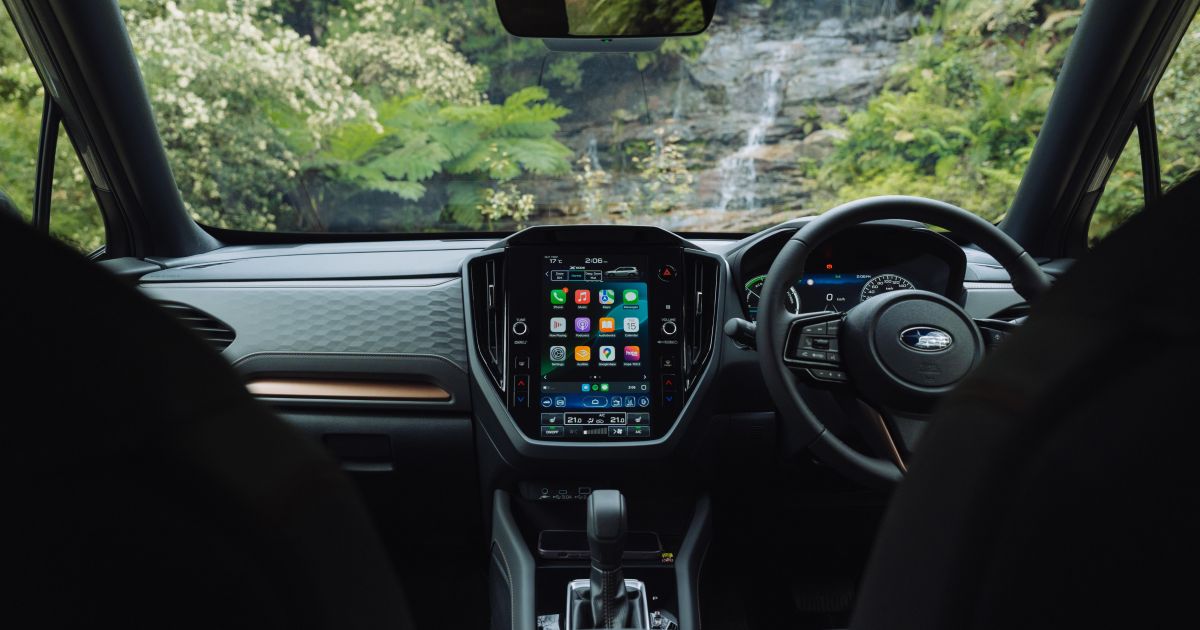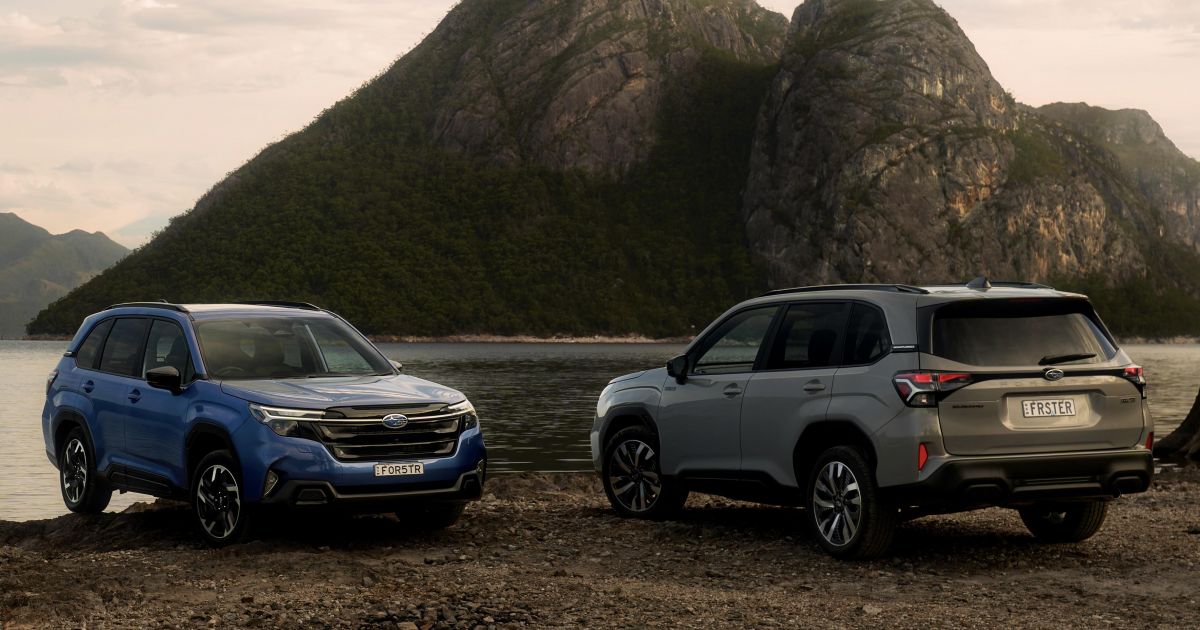After months of drip-fed information and pre-production test drives, the sixth-generation Subaru Forester has finally landed in Australia.
While Subaru’s Australasian media launch took place in New Zealand last week, early-bird Aussies who pre-ordered the new Forester have already been taking delivery of their vehicles for the best part of a month.
On sale in North America since mid-2024, the Mk6 Forester was launched in Europe in October last year. That should have given us plenty of time to wrap our heads around the new Forester, but Subaru Australia had been coy about local details until recently.
Full Australian pricing and specifications were only released around two months ago, which provided a long-awaited insight into exactly what the new model would bring here – lifting the fog on its new ‘Strong Hybrid’ powertrain in particular.
What’s all the fuss about, then? Well, the Strong Hybrid system pairs a significantly more powerful hybrid system with Subaru’s signature boxer engine, promising enhanced performance and efficiency compared to the mild-hybrid system offered with the outgoing generation.
It’s a much-needed upgrade for Subaru’s top-selling nameplate, as it brings it into the modern age with a hybrid powertrain that, at least on paper, can contend with segment heavy-hitters like the Toyota RAV4 and Hyundai Tucson.
The remainder of its changes are largely cosmetic, including the new body, while its interior has been brought up to speed with other current Subaru models like the Impreza, Outback, and WRX. That said, those cabin layouts have barely changed over the past three or four years, but there’s also an impressive list of standard equipment in the Forester even at the bottom of the range.
On the other hand, the Forester’s petrol powertrain has received minimal tweaks bar a slight torque bump. Elsewhere, the suspension and steering have been retuned, noise and vibration levels have been refined, and the automatic transmission now offers broader gear ratios for a more versatile driving experience.
It’s worth noting that although we drove Kiwi-spec examples of the new Forester, specifications are practically identical to those in Australia. Are the changes enough to keep the Forester a favourite, or has Subaru left too much on the table?
How much does the Subaru Forester cost?
Prices are up by nearly $5000 across the range, with the new Forester now starting at $43,490 before on-road costs.
| Model | Price before on-road costs |
|---|---|
| 2026 Subaru Forester AWD | $43,490 |
| 2026 Subaru Forester AWD Premium | $46,490 |
| 2026 Subaru Forester AWD Hybrid | $46,490 |
| 2026 Subaru Forester AWD Sport | $48,490 |
| 2026 Subaru Forester AWD Touring | $50,990 |
| 2026 Subaru Forester AWD Hybrid Sport | $54,990 |
| 2026 Subaru Forester AWD Hybrid Touring | $55,990 |
Of course, all Foresters retain Subaru’s trdemark all-wheel drive system as standard.
But for context, the RAV4 range starts at $42,260 before on-roads for the entry-level front-wheel drive hybrid GX – $870 less than the base Forester. That said, the cheapest all-wheel drive RAV4 is the GX eFour, which costs $45,260 before on-roads – $1770 more than the base Forester but offers hybrid tech.
The cheapest Forester Hybrid costs $1230 more than the GX eFour.
For reference, the outgoing Forester was priced from $38,690 before on-road costs for the base 2.5i, and $50,140 before on-roads for the flagship Hybrid S.
To see how the Subaru Forester stacks up against its rivals, use our comparison tool
What is the Subaru Forester like on the inside?
It’s better to think of the interior as an evolution rather than a revolution, but even that’s a stretch.
Yes, it’s a progression from the previous generation, featuring a larger infotainment screen and generally cleaner construction, but it’s hardly groundbreaking. As mentioned previously, this fundamental layout is practically identical to that of every other current Subaru, which means it lags behind the competition.
That said, some buyers may prefer a familiar interior, particularly those who have bought Subarus in recent years. It may not be as flashy as an equivalent Hyundai or a Kia, but not everyone wants a screen-heavy, all-touch interior, and they seem to be the buyers Subaru has targeted with this interior.
Headlining the new cabin is the brand’s monolithic 11.6-inch portrait-style multimedia touchscreen, but it somehow feels better integrated in the Forester than it does in the WRX, for example. The taller, boxier proportions of the Forester’s cabin contribute to this, and everything feels quite natural from the driver’s seat.
The screen itself is easy enough to navigate, helped by a series of shortcuts always available above the climate section. There are driver-assist functions here, but the main buttons are for vehicle settings and connectivity options, including wireless smartphone mirroring for the latter.
ABOVE: Australian Forester Touring (left), overseas instrument cluster identical to Australian models (right).
The design of the infotainment screen’s graphics leaves a little to be desired, as it looks like a slight reskin of what featured on the previous generation. Its glassy bubble icons (which could be confused for an early prototype of Apple’s Liquid Glass UI) and starry background aren’t new, and they’re a big part of why the cabin looks a little dated.
The icons are large though, which means they’re easy to see and prod when on the move. You also have two physical knobs on either side, as well as glossy black buttons for basic climate functions including temperature and demisters.
We don’t like that the rest of the climate system is embedded at the bottom of the screen’s display. The ‘buttons’ here also look out of place compared to the design of everything above, and it’s still as fiddly as ever – this is a departure from the physical unit of the previous Forester.
The older-school setup of the Forester’s cabin lends itself well to a physical system anyway, so something bespoke here would go a long way. Still, the whole unit and its integration into the dashboard look good in the car, though we could do with a less piano black plastic.
It’s also worth noting that every Forester comes with the same screen, regardless of trim level. While buyers of top-shelf variants may feel short-changed by that, it’s good for entry-level shoppers who will also enjoy the luxury of amenities like heated seats and a wireless phone charger.
One thing that does change across the range is the instrument cluster. All petrol variants and the base Hybrid feature a standard two-gauge setup, with Subaru’s old digital screen taking up the small area between them. Functional and clean, no problems here.
The Hybrid Sport and Touring grades at the top of the range are the only two to get Subaru’s new 12.3-inch instrument display. This is a nice-to-have rather than a necessity, but it’s graphically sharp and improves the cabin environment of these higher-spec trims.
Its UI matches that of the infotainment screen, yet it looks crisper thanks to its high resolution. Both clusters can be navigated using the robust physical buttons and switches located on the left side of the steering wheel, and Hybrid variants replace the tachometer with a Toyota-esque power meter.
Once again the theme here is functionality, and there are a handful of displays to select from in vehicles with the digital cluster. These include standard gauges, a stripped-back minimalist layout and a map, all of which serve a purpose and look good while doing it.
Upholstery also changes between trim levels. Base and Premium grades are identifiable by their cloth upholstery, while Sport grades feature a durable-looking grey synthetic leather that’s supposedly water-repellent for those extended fishing weekends.
The finest synthetic leather and suede mix is reserved for the Hybrid Touring, but the seats in all Foresters are comfortable and offer ample adjustment, including lumbar support in some trims. A Harman Kardon sound system is also reserved for bigger spenders, but the standard system in base variants sounds surprisingly good, too.
Other items up front include two central cupholders finished in scratchy black plastic, as well as AUX, USB-A, and USB-C outlets, a sunglasses holder, and a black headliner across the range. Finally!
Moving to the second row reveals loads of space. The fishbowl cabin creates a spacious atmosphere back here, which is enhanced if you happen to be in one of the trim levels that has a sunroof, even if it isn’t panoramic.
We didn’t find the bench seat to be all that comfortable, as it’s flat and firm. This at least makes the middle seat more comfortable for its unlucky occupant, but they’ll still have to deal with a driveline tunnel on the floor.
There are some creature comforts, like a USB-A port, USB-C port, and rear-facing air vents on back of the centre console. There’s also a fold-down centre armrest with cupholders, but the space is still a little bland.
You’ll also find more scratchy plastic on the door cards, but there’s at least some personality across the range, with different-coloured accents and stitching depending on which trim you choose, the most luxe of which are found in the Hybrid Touring, naturally.
The boot is where you’ll find the most significant compromise for the new Forester. For petrol variants, hardly anything has changed; there’s still plenty of space, a couple of cargo hooks on either side, and a neat cut-out for smaller items on the left.
Under the boot floor is a space-saver spare wheel, which isn’t ideal but better than nothing… we’re looking at you, Forester Hybrid. Under the floor in Hybrid models is only a tyre repair kit, which is a serious omission in a car with some off-road credentials.
This is undoubtedly due to the packaging of the battery. It’s unfortunate because punctures can occur on even the simplest trails you might come across when going fishing or camping, as evidenced by the flat tyre suffered by one of the cars on our launch drive.
You can opt for a clunky towbar-mounted spare wheel carrier at purchase, but that’s hardly a glamorous workaround.
| Dimensions | Subaru Forester |
|---|---|
| Length | 4655mm |
| Width | 1830mm |
| Height | 1730mm |
| Wheelbase | 2670mm |
| Cargo capacity (to window line) | 496-1174L (Forester petrol) 484-1162L (Forester Hybrid) |
To see how the Subaru Forester stacks up against its rivals, use our comparison tool
What’s under the bonnet?
At the heart of all new Foresters is a 2.5-litre four-cylinder naturally aspirated boxer engine, in classic Subaru fashion. This is mated with a continuously variable transmission (CVT) as standard in petrol vehicles, but things get more complicated in Hybrids.
| Specifications | Subaru Forester petrol | Subaru Forester Hybrid |
|---|---|---|
| Engine | 2.5L flat 4cyl naturally aspirated petrol | 2.5L flat 4cyl naturally aspirated petrol |
| Engine power | 136kW @ 5800rpm | 121kW @ 5600rpm |
| Engine torque | 247Nm @ 3700rpm | 212Nm @ 4000-4400rpm |
| Electric motor outputs | – | 90kW/276Nm |
| System outputs | – | 145kW |
| Battery | – | 1.1kWh |
| Transmission | CVT | TH2B Hybrid Transaxle |
| Drive type | All-wheel drive | All-wheel drive |
| Kerb weight | 1622-1651kg | 1717-1766kg |
| Fuel economy (claimed) | 7.9L/100km | 6.2L/100km |
| Fuel tank capacity | 63L | 63L |
| Fuel requirement | 91-octane regular unleaded | 91-octane regular unleaded |
| CO2 emissions | 180g/km | 140g/km |
| Emissions standard | Euro 6c | Euro 6c |
| Braked towing capacity | 1800kg | 1200kg |
For an idea of the upgrade the Forester Hybrid has received, the outgoing model – referred to as a mild-hybrid – employed an electric motor producing just 12kW of power and 66Nm of torque to supplement its smaller 2.0-litre boxer four, which produced 100kW and 196Nm on its own.
Apart from its higher engine, motor and total outputs, the new Forester Hybrid also upgrades from a 48-litre fuel tank to a 63L one, while combined-cycle fuel consumption has been reduced by 0.5L/100km compared with the outgoing hybrid, resulting in a longer range between refills. But it’s still thirstier than the related RAV4 Hybrid, which consumes just 4.8L/100km, even though its engine pperates on the more efficient Atkinson combustion cycle.
The Forester Hybrid features Subaru’s TH2B hybrid transaxle, which differs from a CVT by incorporating a planetary gearset and two electric motors – one to drive the car and a secondary motor/generator to handle engine starts and battery recharging.
The electric motor and gear set manage power delivery, replacing the traditional torque converter with a transaxle damper. This means that unlike the petrol Forester’s CVT, the Hybrid’s transmission uses no pulleys or chains.
Crucially, the Forester Hybrid maintains a physical connection between the front and rear axles through a prop shaft and rear differential. On paper, this should make it more capable off-road than an AWD RAV4, which splits its hybrid system with the petrol engine powering the front wheels and the electric motor powering the rear-end.
But Subaru’s ‘Symmetrical All-Wheel Drive’ system does come at the cost of fuel economy, and our non-representative fuel figures at the launch were at least 1.0L/100km higher than Subaru’s claim for both powertrains.
The petrol Forester has the same power output as its predecessor, though torque is up by 8Nm and the CVT has broader gear ratios. This provides shorter first and reverse gears to aid in hill climbing and low-speed acceleration, as well as a longer top gear to reduce highway RPMs.
Subaru also claims to have reduced noise, vibration and harshness levels, while improving the engine’s reliability and responsiveness.
To see how the Subaru Forester stacks up against its rivals, use our comparison tool
How does the Subaru Forester drive?
This is where the Forester has received the most significant upgrades, so bear with us as we lay it all out.
Improving the ride was a focus, but we received little information about specific chassis changes to achieve that. We know that there was an intention to improve the car’s stability both at speed and through turns, which was achieved by stiffening both the suspension and body.
This ties into its steering. Subaru claims that the new Forester features “steering technology” derived from the current WRX, resulting in a more direct feel. That should mean the car requires less steering lock in bends, as well as fewer corrections when travelling in a straight line.
That all sounds like splitting hairs, and it is. Even Subaru’s demonstration video revealed only slight visual differences between the new and old Forester, but what matters is how that translates to the average driver.
Fortunately, the new Forester is a joy to pilot on the open road.
Powertrains aside for now, there’s something quite satisfying about the car’s steering. It still doesn’t offer class-leading feedback, but it’s well-weighted, responsive and accurate, diligently going anywhere you point it, which inspires confidence and makes for an easy drive.
It’ll take a lot to properly unsettle the car, and mid-corner bumps are transmitted to the driver’s hands with enough feedback to know what’s happening beneath you, while dialling out unnecessary kick and feedback. Subaru says the electric power steering has been tuned to be more responsive, and that’s something we could also feel.
Equally, there’s also just enough body roll to remind you this isn’t a sports car, but the speed at which you can take turns is more impressive. On quick changes of direction, the Forester responds without hesitation.
Then there’s the ride, which is also a substantial improvement. The outgoing Forester tended to feel unsettled on its springs, making it feel a little wobbly at freeway speeds – especially compared to some other mid-size SUVs.
This iteration feels much more planted despite maintaining a relatively high ground clearance. The suspension setup is firmer, but by no means uncomfortable – it reminds me of the special-edition Forester STI Sport from 2024, which featured sportier suspension tuned by Subaru’s in-house performance division.
Its suspension tune wasn’t geared explicitly for New Zealand or Australia, which means there could be room for further refinement if Subaru were to follow the route Mitsubishi took with its updated Outlander.
Interestingly, we didn’t notice any meaningful difference between the ride/handling of petrol and hybrid vehicles, despite the latter being slightly heavier. Naturally, the ride becomes more uncomfortable once the tarmac ends and the rough stuff begins, when the shudder of bumps and rocks can become tiring after prolonged travel.
To its credit, we didn’t notice any major interior creaks or rattles, which suggests sturdy build quality. This means the car should be able to withstand rough trails, where it showcases the benefits of its relatively generous ground clearance and all-wheel drive traction, which we could feel working to find grip on uneven and loose ground.
In terms of noise, the difference between old and new is hard to notice, although Subaru demonstrated minuscule improvements of no more than four decibels depending on seating position and vehicle speed, the scale of which is reinforced once you hit coarser roads.
There’s still a fair bit of tyre noise, albeit slightly less on the thicker sidewalls of the Forester’s cheaper variants. It’s not unbearable, but there is a minor improvement from additional floor insulation, thicker windows, and extra damping material in the roof and body.
Now for the powertrains. The new Hybrid features some technology derived from Toyota but maintains a distinctly Subaru construction, with its all-wheel drive and traditional mechanical driveline.
It also has a larger a 2.5-litre boxer engine than before, albeit detuned and on a more efficient combustion cycle. The result is a competent hybrid system that performs seamlessly in almost all conditions, even if EV Mode deactivates itself above 40km/h.
Opening the power flow monitor also reveals that the car is constantly switching between engine and battery energy sources, and between charging using the engine or wheels, which seems bizarre. The Hybrid provides a nice push from a standstill, but the engine and transmission become quite loud under hard acceleration.
It all works as intended, but it’s just not the most inspiring combination, and it’s not particularly quick as the revs climb. There’s at least a difference between the I and S drive modes, as the latter provides snappier throttle response.
The transition from electric to petrol power is seamless, but switching back to a petrol-only Forester is refreshing. The engine is easier on the ears under load, and it feels like it keeps pulling as it rises through the rev range – settling on a remarkably low 1500rpm at 100km/h.
This more traditional powertrain suits the Forester well, especially now that it has received a slight torque increase. It just feels more conventional and predictable, which could well be the more palatable option for many Subaru buyers.
Still, we want to emphasise that it’s great to have two competent powertrains to choose from. Early demand reflects this, as Subaru Australia says the buyer split is currently around 60 per cent towards hybrid variants.
Subaru’s X-Mode is also a good feature for light off-roading and has a noticeable effect on power delivery. It’s always visible at the top of the infotainment screen, making it easy to access, and it becomes more versatile as you move up the Forester range with additional off-road modes.
Unfortunately, we had issues with the Forester’s new driver distraction monitor. As in some other Subaru models, it’s far too sensitive in normal driving and pings you at every opportunity, even if you’re paying attention to the road, but it can be disabled and even disables itself automatically if the driver is wearing sunglasses. We didn’t get the chance to test its highway cruise control behaviour.
Visibility out of the cabin is also good, and there’s a healthy array of cameras to rely on, but the omission of front parking sensors makes the car more challenging to park, although Subaru’s clever EyeSight driver assistance suite should make up for this somewhat.
| Off-road dimensions | Subaru Forester |
|---|---|
| Track front and rear | 1565mm front, 1570mm rear |
| Ground clearance | 220mm |
| Approach angle | 19.0º |
| Departure angle | 24.7º |
| Ramp breakover angle | 19.3º |
To see how the Subaru Forester stacks up against its rivals, use our comparison tool
What do you get?
Three of the Forester’s trim levels are available with either petrol or hybrid power, but standard equipment differs for each.
2025 Subaru Forester AWD equipment highlights:
- 18-inch alloy wheels
- Space-saver spare tyre
- Automatic, steering-responsive LED headlights
- Power-folding exterior mirrors
- LED front fog lights
- Front cornering lights
- Ladder-style roof rails
- ‘X-Mode’ with one drive mode
- Subaru Intelligent Drive (SI-Drive) with two modes
- Hill descent control
- Proximity entry with push-button start
- 11.6-inch portrait-oriented touchscreen infotainment system
- Wireless Apple CarPlay
- Wireless Android Auto
- Wireless phone charger
- USB-A and USB-C outlets
- 4.2-inch instrument cluster screen
- 6-speaker sound system
- Heated front seats
- Cloth upholstery
- Dual-zone climate control with rear vents
- Leather-wrapped steering wheel
- Silver interior stitching
- One-touch power-folding rear seats
- 60:40 split/fold rear seats
- Auto-dimming rear-view mirror
Forester AWD Premium adds:
- Power tailgate with kick sensor
- 8-way power driver’s seat with lumbar
- 8-way power passenger seat
- Satellite navigation
- Auto-dipping passenger-side mirror
- Power-folding exterior mirrors with memory
Forester AWD Sport adds:
- Dark metallic 18-inch alloy wheels
- Power sunroof
- ‘X-Mode’ with two drive modes
- Black front grille with green insert
- Green badging
- Water-repellent synthetic leather upholstery
- Leather-wrapped steering wheel
- Green interior stitching
Forester AWD Touring adds:
- Gloss black front grille, front and rear bumper accents, side mirrors
- Low-profile roof rails
- Leather and suede upholstery in black or brown
- Brown interior stitching
- Ventilated front seats
- 10-speaker Harman Kardon sound system with subwoofer
ABOVE: Forester Hybrid Touring
Forester AWD Hybrid adds (over base Forester):
- Tyre repair kit (instead of space-saver)
- Paddle shifters for regenerative braking
Forester AWD Hybrid Sport adds (over Forester Sport):
- Bronze 19-inch alloy wheels
- Bronze exterior accents
- Low-profile roof rails
- Brown interior stitching
- 12.3-inch digital instrument cluster
- 10-speaker Harman Kardon sound system with subwoofer
Forester AWD Hybrid Touring adds (over Forester Touring):
- Dark grey machined gloss finish 19-inch alloy wheels
- Leather and suede upholstery
To see how the Subaru Forester stacks up against its rivals, use our comparison tool
Is the Subaru Forester safe?
The Subaru Forester has a five-star ANCAP safety rating, based on testing conducted by Euro NCAP in 2024. This applies to both powertrains.
| Category | Subaru Forester |
|---|---|
| Adult occupant protection | 83 per cent |
| Child occupant protection | 91 per cent |
| Vulnerable road user protection | 86 per cent |
| Safety assist | 75 per cent |
Standard safety equipment includes:
- 9 airbags, including:
- Far-side
- Front passenger seat cushion
- Active torque vectoring
- Autonomous emergency braking (forward and reverse)
- Autonomous emergency steering
- Adaptive cruise control
- Blind-spot monitoring
- Driver monitoring system
- Emergency driving stop system
- Emergency lane-keep assist
- Front side radar
- Lane centring
- Lane change assist
- Lane-keep assist
- Rear cross-traffic alert
- Rear parking sensors
- Surround-view camera
- Traffic sign recognition
- Tyre pressure monitoring
- Wide-angle monocular camera
To see how the Subaru Forester stacks up against its rivals, use our comparison tool
How much does the Subaru Forester cost to run?
Subaru Australia backs its Forester with a five-year, unlimited-kilometre warranty, along with an eight-year, 160,000km warranty for the Hybrid’s battery.
| Servicing and Warranty | Subaru Forester |
|---|---|
| Warranty | 5 years, unlimited kilometres |
| Roadside assistance | 12 months |
| Service intervals | 12 months or 15,000km |
| Capped-price servicing | 5 years |
| Average annual service cost over 5 years | $459.80 |
| Total capped-price service cost | $2299 |
Subaru’s capped-price service costs are outlined below. They’re the same for petrol and Hybrid variants.
| Service | Price |
|---|---|
| 1yr, 15,000km | $347.95 |
| 2yrs, 30,000km | $520.45 |
| 3yrs, 45,000km | $393.10 |
| 4yrs, 60,000km | $679.30 |
| 5yrs, 75,000km | $358.20 |
To see how the Subaru Forester stacks up against its rivals, use our comparison tool
CarExpert’s Take on the Subaru Forester
The Forester has received a healthy upgrade, even if a lot of what’s changed appears relatively minor on the surface.
Its new exterior design looks smart to our eyes, and grows on you as you spend time with it in the metal. The interior isn’t revolutionary, but it all works as it should and has a clean look. And it’s been improved with quality items like the non-essential digital instrument display if that’s what you’re into.
Most of the Forester’s on-road characteristics have also been upgraded, and we thoroughly enjoyed driving the Forester on New Zealand roads. More direct steering and a more confident ride are just what the doctor ordered, and we could spend hours behind the wheel of this new model quite easily.
The hybrid powertrain is good, but not outstanding. It has many Toyota traits, with its loud engine and dreary CVT-like transmission detracting a little from the experience. Still, the fact that it now behaves like a fully fledged hybrid is a significant advance over the mild-hybrid mill it replaces.
It’s easy to drive in built-up areas too, and you’ll be spending more time in EV mode in such settings. This will improve fuel economy, potentially getting closer to Subaru’s claim than we were able to.
But I still preferred driving the petrol Forester, as it feels more traditional and easier to live with. The fuel economy trade-off is nothing new for Subaru, and the combination of the boxer engine, CVT and improved ride and handling makes for a dependable and predictable drive that’s never going to throw up any drastic surprises.
It’s disappointing there are no front parking sensors and that the driver attention monitor is actually distracting. It’s the same in the Solterra (even glancing through the instrument cluster menu sets it off) and it isn’t something buyers expect from a Subaru.
Those two blights aside, the new Forester is a complete package that now offers more choice than ever before. Despite the higher price tags, it should remain Subaru’s sales leader, even if it’s unlikely to become the new RAV4.
Yes, it’s higher-tech and higher-priced, but the latest Forester remains true to its roots, and it should be high on the consideration list for traditionally minded mid-size SUV buyers.
Interested in buying a Subaru Forester? Let CarExpert find you the best deal here
Click the images for the full gallery

